I’m back in Bristol from Tahiti for a quick visit at the moment, so will try to catch up on our time in the fabulous Marquesas and Tuamotus before I return next week……
Saturday 13th May to Thursday 1st June, 2017
The Marquesas are part of French Polynesia, which consists of several widespread groups of islands: the Society Islands in the west, centrally the low-lying atolls of the Tuamotus, the mountainous Marquesas to the east and to the south the Austral Islands and the Gambier Archipelago. Most people have heard of Tahiti and Bora Bora which are part of the Society Islands, but fewer of the Marquesas which are the first stop after crossing the Pacific for the majority of sailing boats on the ‘Coconut Milk Run’, as the most sailed route from Panama across the Pacific to New Zealand is known.
The Marquesas must be one of the most dramatically beautiful places on Earth, with ten main islands formed from long-extinct volcanoes, soaring mountainous peaks rising from the sea, beautiful sandy bays with palm trees, gentle friendly people. It is all very lush and fertile – no doubt because it rains on so many days, at least it did whilst we were there. These islands are relatively unvisited by tourists and although there are airstrips on some with flights from Tahiti and the occasional cruise ship, it is well off the beaten track for most holidaymakers. There are many yachts in the more popular bays, with April to June being the peak time to cross the Pacific, and a sociable community of cruisers that we enjoyed being part of.
Fatu Hiva
Arriving in the Bay of Virgins, Fatu Hiva, after 24 days at sea there couldn’t have been a more spectacular place to end the longest leg of our Pacific crossing. As we motored into the bay, which deeply indents the coast with almost sheer sides, it was breathtaking – the steep lower slopes covered in palm trees, vivid green vegetation above, high pinnacle rocks rising dramatically above the bay with goats precariously balanced on them, and beyond jagged mountains their tops covered in cloud. The small bay was already crowded with about sixteen yachts and catamarans as we edged our way in and found space to drop anchor in the deep water.
Several of the yachts we had been in contact with during the crossing, Nautilus, Jadean and Zatara, were already at anchor and we had a jolly first evening on board catamaran Jadean enjoying the barbecued tuna that they had caught on passage. A couple of glasses of fizz on top of so many nights of sleep deprivation and complete abstinence on passage finished me off and we headed to bed early.
The Bay of Virgins was originally named the Baie de Verges, the Bay of Penises, after the huge phallic shaped rocks that rise up above the bay. The story goes that the prudish missionaries added an “i” and renamed it the Baie de Vierges – the Bay of Virgins. The small fishing village of Hanavave lies at the head of the bay, a simple, friendly place of single story homes, colourful flowering and variegated shrubs, lemon trees and bananas growing by the roadside, a small store, post office, gendarmerie. Both French and Maohi, a native Polynesian language, are spoken and it was strange trying to speak French after being so long in Spanish speaking countries – we kept mixing up French and Spanish words. As we walked up the village street we were greeted with ‘bonjour’ and asked if we had perfume, wine, t-shirts, rope etc.
One night we ate a meal with a local family – a huge buffet of roast goat, rice, baked banana and coconut sauce with, for pudding, pamplemousse, the sweet and juicy grapefruit that grows on trees everywhere here. We refilled the tanks on Vega with fresh water from the tap in the village, making several trips in the dinghy with our water containers. We went on walks, trying to get some strength back into our legs which had suffered somewhat after sitting around on the boat for over three weeks at sea. It was about an hour up the valley through dense, green, damp mosquito-infested forest to where ‘le cascade’ drops into a deep pool and you can swim in the clear, refreshingly cool water.
On a peak high above the village there is a huge concrete cross and we scrambled up the goat track leading up from the road to look down onto the bay below with Vega at anchor amongst the other boats.
After four days in this paradise we moved on to the more northerly island of Hiva Oa. The night before we left the last of our three cylinders of butane gas that fuel the cooker ran out as I was cooking supper. Fortunately pasta will continue to cook in hot water (a useful tip for future economy). Unfortunately there was no morning cup of tea – not a good start for the nine hour sail north.
Hiva Oa
Traitor’s bay at Atuona, the capital of the island of Hiva Oa, is nestled behind a breakwater to give some protection from the strong swell outside. It was already full of yachts using both bow and stern anchors to stop them from swinging around in the wind. There wasn’t space where we wouldn’t be at risk of crashing into a neighbouring boat so we dropped anchor outside the breakwater near to friends Ian and Steph on Nautilus. It was a rough, sleepless three nights as Vega rolled violently in the strong winds. Getting on and off the dinghy became a risky manoeuvre, a question of getting the timing right to get from one to the other as the dinghy moved up and down independently of Vega in the swell and as they bashed against each other.
We had to formally check into French Polynesia here by visiting the local gendarmerie in Atuona, a 30 minute walk from the bay into town. At the gendarmerie we showed our passports, boats papers and zarpé, which documented our departure from the Galápagos, and filled in the requisite forms. In exchange we were given a customs declaration to be posted off to Tahiti and we trotted off to the post office round the corner to post it, paying 85 Polynesian Francs for the stamps.
We bumped into old friends Terry and Carol from Little Dove (last seen in Panama, they had visited mainland Ecuador en route here), took our laundry to be done by Sandra who organises various services for cruisers, restocked at the supermarket and refilled our cylinders with butane. This necessitated buying a huge local gas cylinder which had French fittings, incompatible with our newly purchased aluminium gas tanks with US fittings. We located Chris, who had been living with his black and white cat on a 50 foot classic yacht, Sagacious, in the boat yard for the last nine months whilst its engine was being fixed. He had sold his house in Guildford when his daughter got fed up with him moping around after being made redundant and had flown over to California to buy the boat. He was cheery and somewhat eccentric in the best British tradition and happy to help us in exchange for some decent teabags and a few beers. Chris had botched together the necessary fittings to fill all varieties of gas cylinders, which involved suspending the local cylinder higher than the one to be filled and allowing the liquid butane to slowly transfer under gravity. His help was much in demand with visiting cruisers just arriving across the Pacific.
It seemed to rain almost all of the time we were in Hiva Oa. One night in the early hours with the boat rolling and in torrential rain Hugh bailed out the dinghy, tied behind Vega, which was rapidly filling up with water. Lightning completed the nightmarish quality of the night. The only plus was that I was able to rig up our rain catcher, a large piece of tarpaulin which collects rainwater to drain directly into the water tanks on Vega.
One of the highlights here was the Gauguin Museum. Paul Gauguin spent the last few years of his life in Polynesia, where he finally retreated in poverty after failing to have his work recognised or understood in France. He died in 1903 in Hiva Oa and his grave is in the cemetery on the hill above the town, a memorial made of solid, crude lumps of reddish black volcanic rock. In the Gauguin museum all the paintings are reproductions, done by a French forger, but it was still a wonderful collection and gave an idea of the life and breadth of work of one of my favourite artists.
We were reminded that the Marquesas are part of France by our visit to the supermarkets. We fell on the Camembert de Normandie, wedges of Brie and jars of pâté de campaigne, but there were no baguettes as the island had run out of flour and was waiting for a delivery by the weekly supply boat from Tahiti (we blamed the Oyster Rally, a round the world rally of large and expensive sailing yachts, which had gone through the islands a few days ahead of us and had also bought up all the wifi cards in the post office). There was a good selection of French wines but with excessive price tags and at US$68 a bottle of Gordon’s gin was completely unaffordable. The wifi was either slow or nonexistent and groups of cruisers were sitting outside the post office with their devices trying to pick up a decent signal. We found a restaurant with a reasonably fast wifi connection and had a long lunch there as well as sharing pizzas one evening with a group of cruisers.
Tahuata
After three rainy days and very rolly, disturbed nights at anchor in Traitors Bay we were glad to move on to our third Marquesas island, Tahuata, a gentle three hour sail west from Hiva Oa.
Hugh was thrilled to hear that Captain Cook had spent 4 days at anchor here in 1774. We stopped at Baie Hanamoena, one of the prettiest bays in Polynesia and very popular with cruisers – there were already ten yachts at anchor when we arrived. It felt very restful – a long sandy beach backed by palm trees, ringed by steep green slopes and topped by high rocky crags. The water here was calm and clear so we were able to clean the hull which had become covered on the Pacific passage by a thick, tenacious green weed and inch-long goose barnacles, spending several hours in the water attacking them with a plastic scraper. We got on with other chores here too, repairing tears in the spray hood using Steph’s amazing heavy duty sewing machine that can handle sailcloth, washing clothes, making bread. The beach was beautiful, the sun shone and the sunsets were fabulous – it felt very peaceful after our hectic time on Hiva Oa. And it didn’t rain!
Nuku Hiva
We left our idyllic anchorage at dusk for an 85nm overnight sail to Nuku Hiva, the largest island of the Marquesas. Initially we motored past the lee of Hiva Oa, where the high mountains of the island masked the wind, but after a few hours the light winds and flapping sails gave way to steadier force 4 winds and we had a good sail north on a broad reach.
As we approached Taiohae in Nuku Hiva, the capital of the Marquesas, there were many yachts spread out at anchor in the wide bay, plus a large cruise ship and a strange looking vessel, Aranui 5, part cruise ship, part cargo ship, which carries both tourists and supplies from Tahiti round the Marquesas and two of the Tuamotu atolls. We read in our lonely planet guide that it is a reasonably priced and popular way to visit the islands, with expert guides on board.
Despite being the capital, Taiohae has a population of only about 1,800, the town spread out along the seafront with a bank, post office, gendarmerie and small hospital, three supermarkets, an upmarket resort at the west end of the bay, a few restaurants and guest houses and a prison with three inmates (apparently all in gaol for minor crimes – the hardened criminals go to Tahiti). Considering that we have found the people so gentle and honest and there seems to be little obvious poverty, I was surprised there is any crime at all – unlike in the Caribbean where dinghy theft and robbery are common we have never felt the need here to lock the dinghy or secure our hatches at night. I read that in the 1770s Captain Cook got fed up with the Polynesians who then had no concept of possessions or wealth and frequently helped themselves to his and his sailors’ property. In retribution Cook burnt houses and smashed canoes and had a man’s ears cut off for ‘stealing’ his sextant.
Here, at last, we found baguettes and bread flour in the supermarkets, fresh fish for sale at the docks, bananas, lemons, papaya, cucumbers and local honey in the vegetable market. There was an excellent open air café by the dock with great grilled tuna, steaks, chips and wifi. Hugh bought a tiki, a carved rosewood figure which fits perfectly in the saloon and should hopefully protect us from evil spirits.
We met up again with many other cruisers here including Karen and Reinhard on Findus who we’d last seen in Grenada nine months ago. One evening we had drinks on Antares, a 120 foot sailing yacht owned by James, a Hawaiian venture capitalist, who was sailing around the world with his wife and two young sons, crew of six plus cook and personal tutor for the boys. James would motor round the anchorage in their tender to find other boats with children and arrange ‘play dates’ for his kids. It isn’t often that I get boat envy but their master bedroom with ensuite would have been nice…
Another spectacular spot was Taioa Bay, on the southwest of Nuku Hiva, a bay not visible from the sea. Trusting our plotter and keeping away from where the surf broke on the rocks on the eastern point, we entered at dusk, motoring hard through the choppy waves into the small bay where calm waters were surrounded by steep mountain slopes descending into the sea.
There is a walk from here up the valley to Vaipo waterfall which has a sheer 800 meter drop. The first section of the two hour walk is through a lush, golden valley which was once the fiefdom of King Te Moana and Queen Vaekehu. The path follows the ancient royal road which goes up the valley following the river, but is now broken, uneven and very muddy. We had to ford the stream several times, the water up above our knees, swollen by all the recent rain. Along the way are overgrown and ruined stone platforms hidden in a tangle of trees and vegetation, testifying to the population that used to live in the valley. Of all major island groups in the Pacific, the Marquesas suffered the greatest population decline in Polynesia from endemic diseases carried by Western explorers from the 17th century onwards. The indigenous people suffered high rates of mortality as they had no immunity to the infectious diseases such as smallpox, measles and influenza which reduced the eighteenth-century population of over 78,000 inhabitants to about 20,000 by the middle of the nineteenth century. By the turn of the 20th century the islands’ population was just over 4,000, although during the course of the twentieth century the population has gradually increased, reaching over 9,000 inhabitants in the 2012 census.
Now there is no longer a whole community here in the valley, just one extended family living in what felt like a garden of Eden with bright, variegated and flowering shrubs, red hibiscus, frangipani and bougainvillea, trees laden with lemons, pamplemousse and banana. On the way to the waterfall we met Paul, who sold us tickets to visit the valley for $10 a head, which we thought enterprising. When Hugh and I arrived back towards dusk, late and muddy, Paul had already set out to look for us, so it was money well spent.
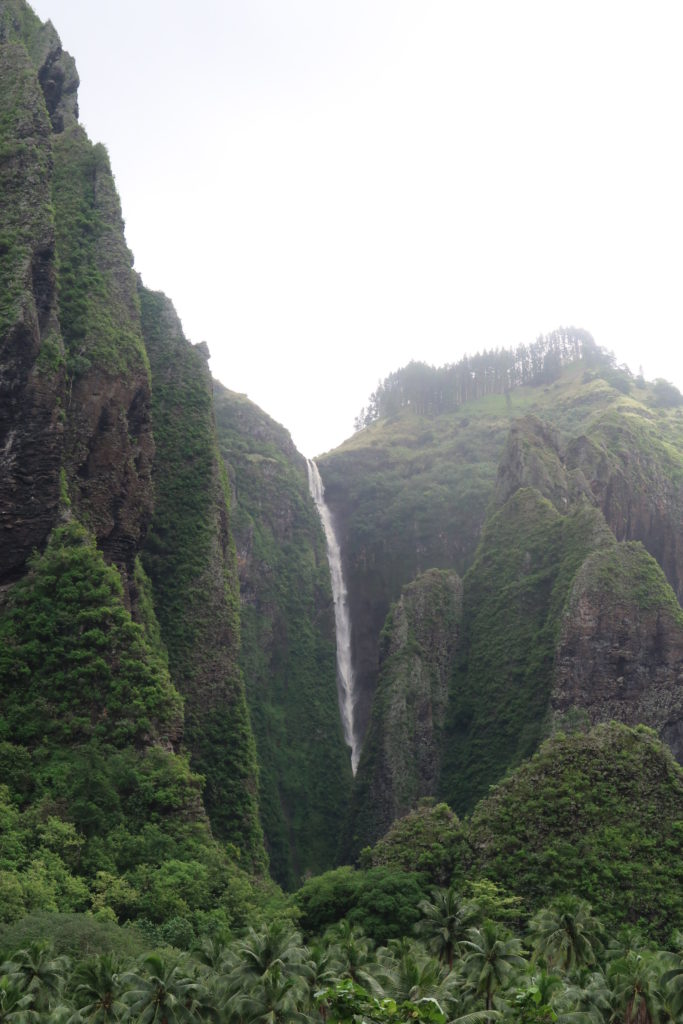
We were keen to completely fill Vega’s water tanks before heading on to the Tuamotus. The tap water had not been drinkable since Hiva Oa and rumour had it there was a tap with potable water in the Baie de Controlleur so we headed east along the coast with Thom, a single handed sailor on his Vancouver 28 ‘Fathom’. The bay was deserted, no other yachts, and there was the tap just by the beach – two trips in the dinghy filling our plastic containers and Vega’s tanks were overflowing. We walked along the road to the village of Taipivai in the next bay. Here Herman Melville, author of Moby Dick, spent three weeks after he jumped ship when the American whaler, Acushnet, put in at Taiohae. We hitched a lift back in a pickup truck and I asked the driver who all the chickens running around belonged to. No one, he told me, they are wild but no one eats them as they are too small and tough. The frozen chicken in the supermarket comes from New Zealand or the USA.
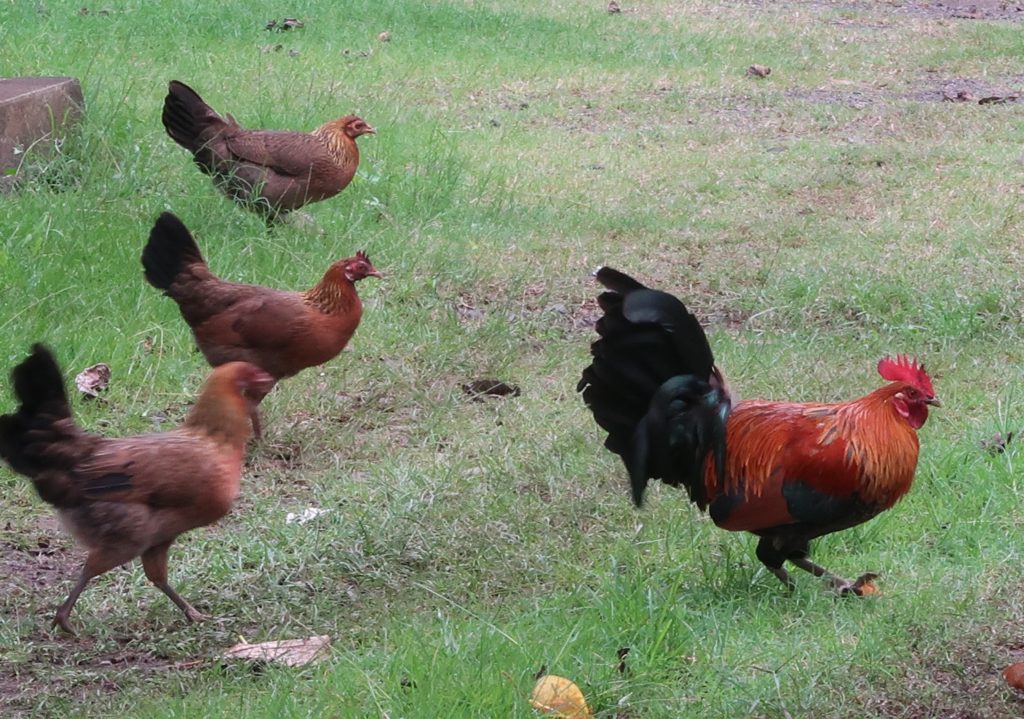
On the north of Nuku Hiva there are three beautiful bays that we were keen to visit. As we rounded the extreme southeast corner of the island we were met by a pod of large grey dolphins, some leaping completely clear of the water, before entering the third bay. Robert Louis Stevenson spent time here whilst cruising the Pacific and succumbed to the charm of the village of Hatiheu which has probably changed little since he visited it in 1888. It has a wooden church with symmetrical red twin steeples, the seafront is planted with lawns and coconut palms and above on one of the peaks looking down over the bay is a white statue of the Virgin Mary, with a crown made of coral, erected in 1872. We couldn’t imagine how they managed to haul it up such a precipitous sheer pinnacle.
Walking up the road leading out of the village there were a number of archeological sites with stone tikis, reconstructed thatched dwellings on the original stone platforms and, following up a small stream past the ancient and sacred Banyan tree, we found petroglyphs of turtles, fish and human figures.
In the evening there was drumming in the village and a group of men were dancing, squatting upright with bent knees, stamping feet, chanting and grunting – we think that they were practicing for Heiva, the festival that takes place throughout French Polynesia in July. There will be big celebrations in Tahiti where we should be by July.
In the bay were also Nautilus and Jadean, with whom we went scuba diving. Barry kindly lent me scuba diving gear and tanks as we don’t have our own equipment on Vega. The visibility wasn’t great after all the recent rain but as we ascended two manta rays, with striking black and white backs, white bellies and two horns, came to inspect us, swirling around us gracefully like giant birds.
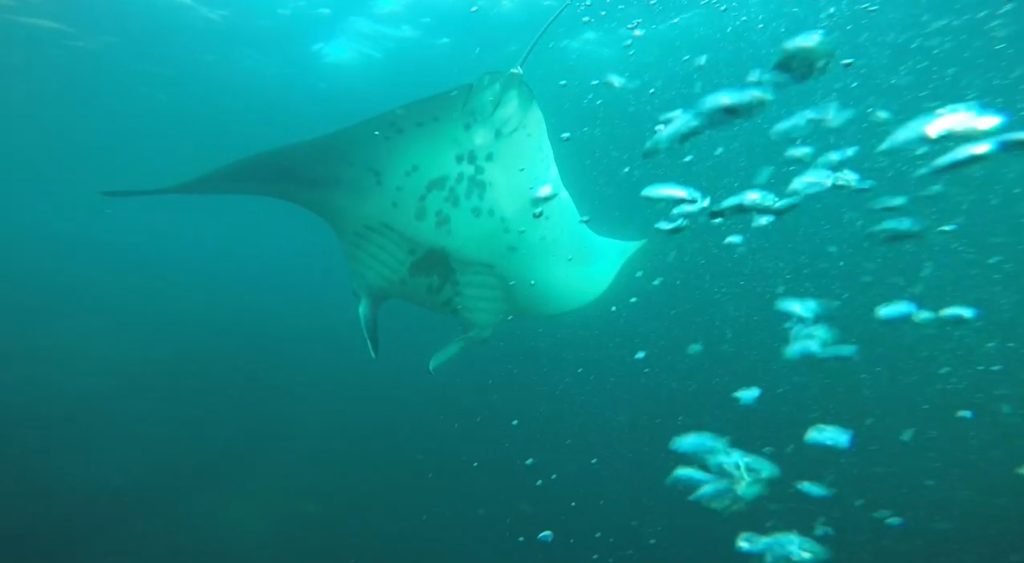
We managed to visit four of the islands in the time we had and wished that we could have spent much longer there but with the need to be in New Zealand by November and a possible trip home from Tahiti in June or July, we had to push on west to the Tuamotus..
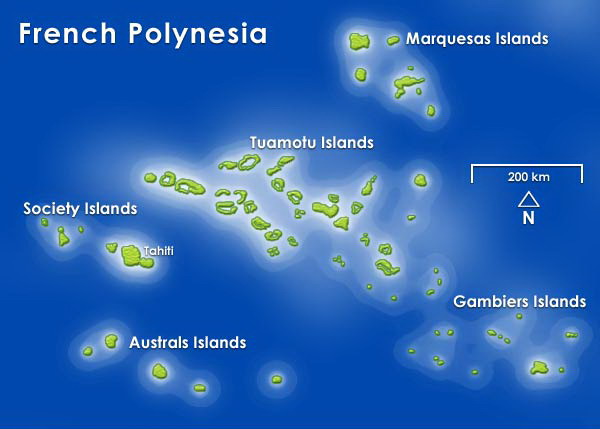
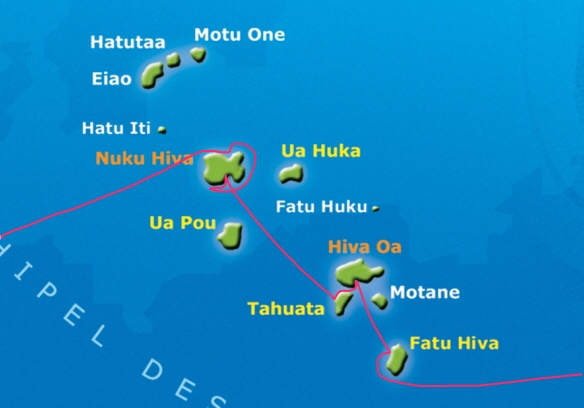
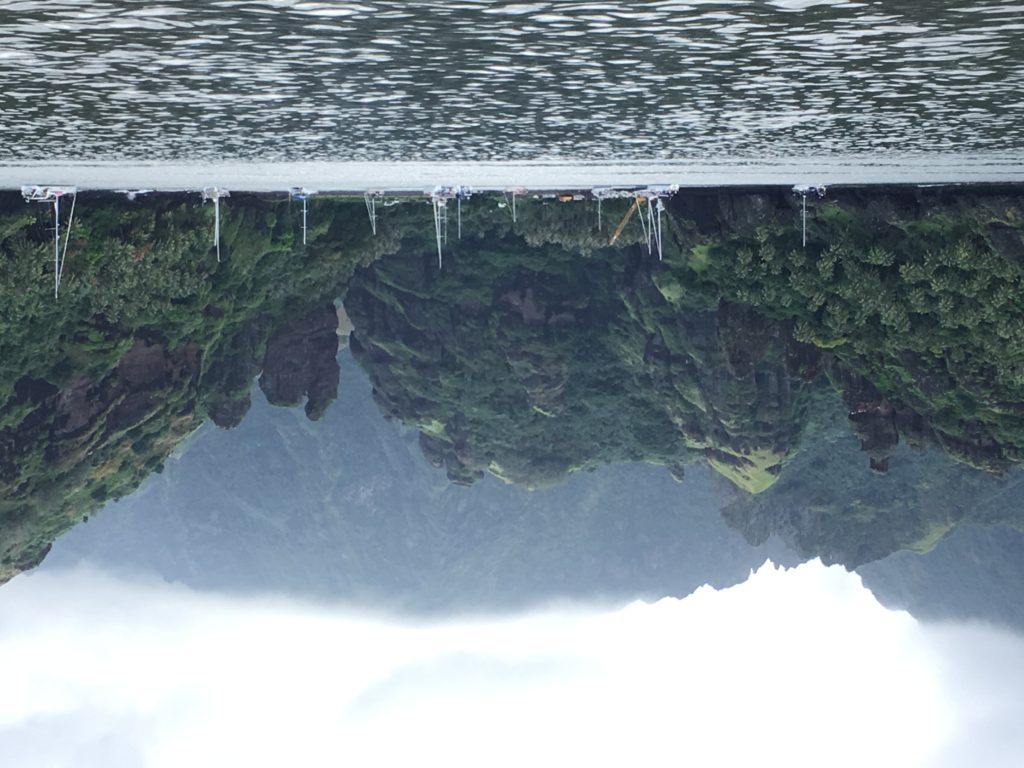
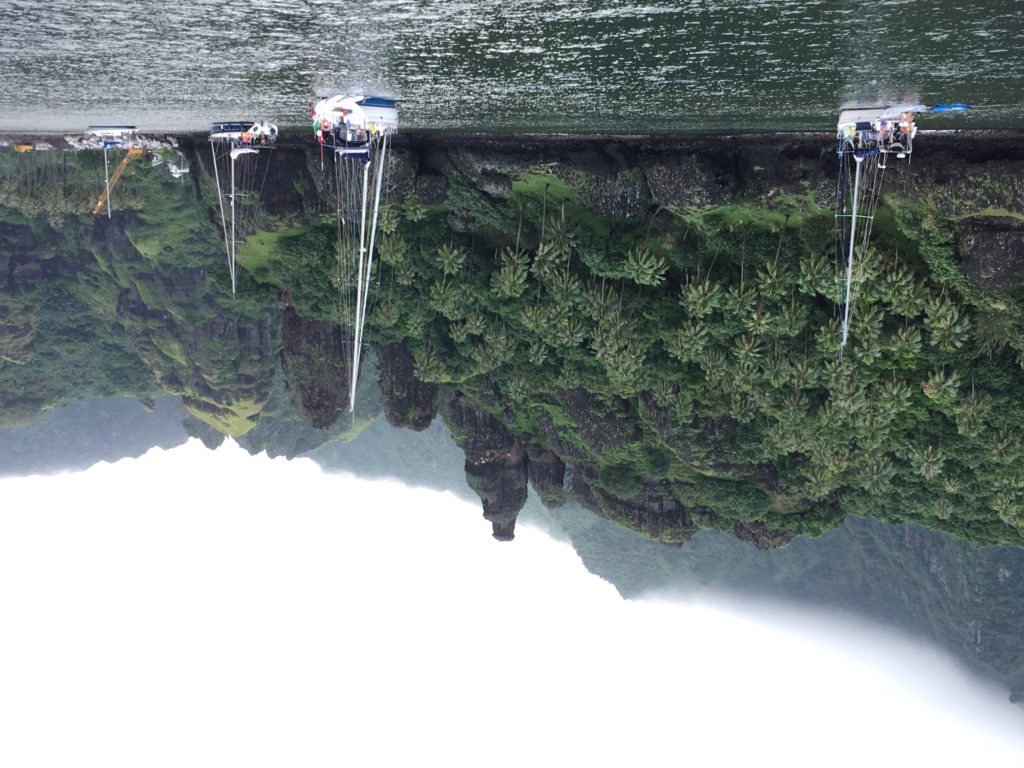
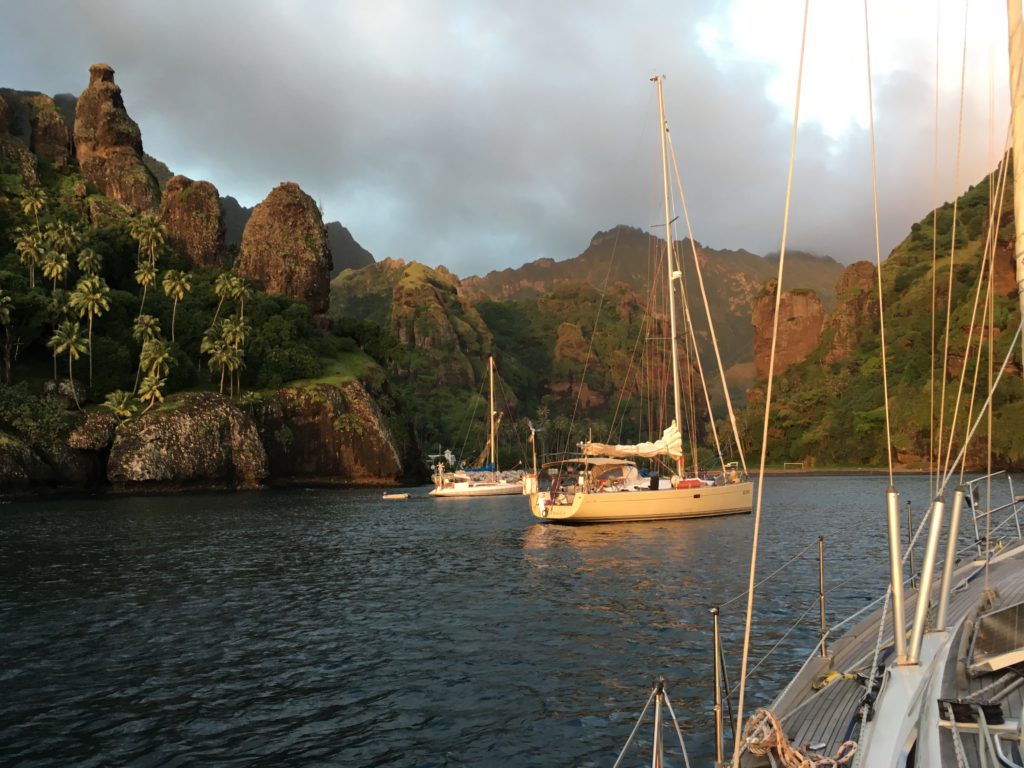
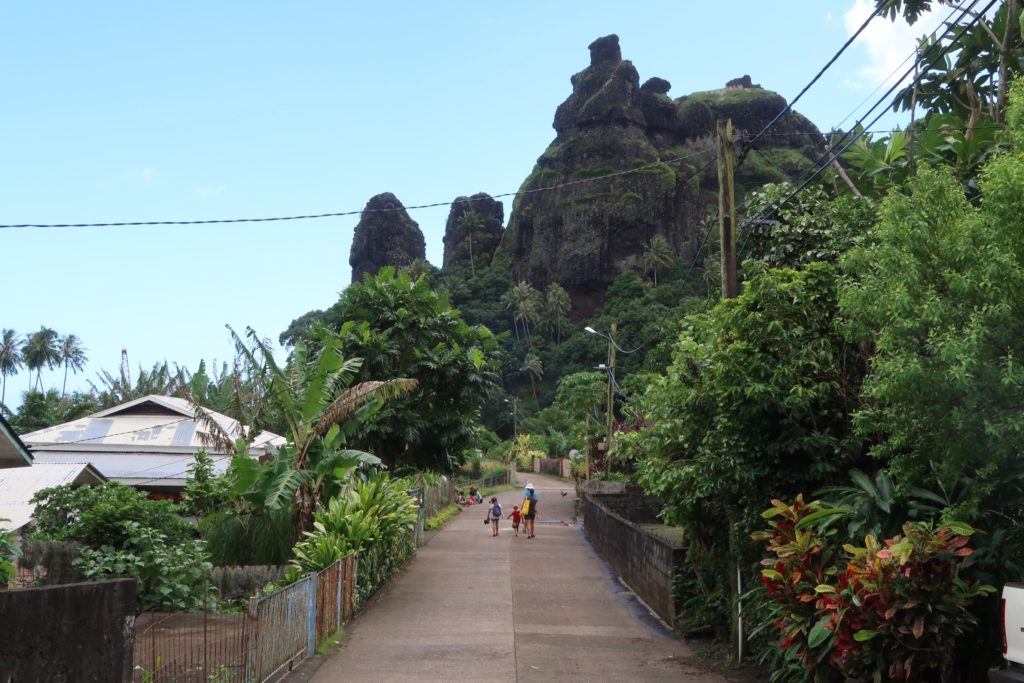
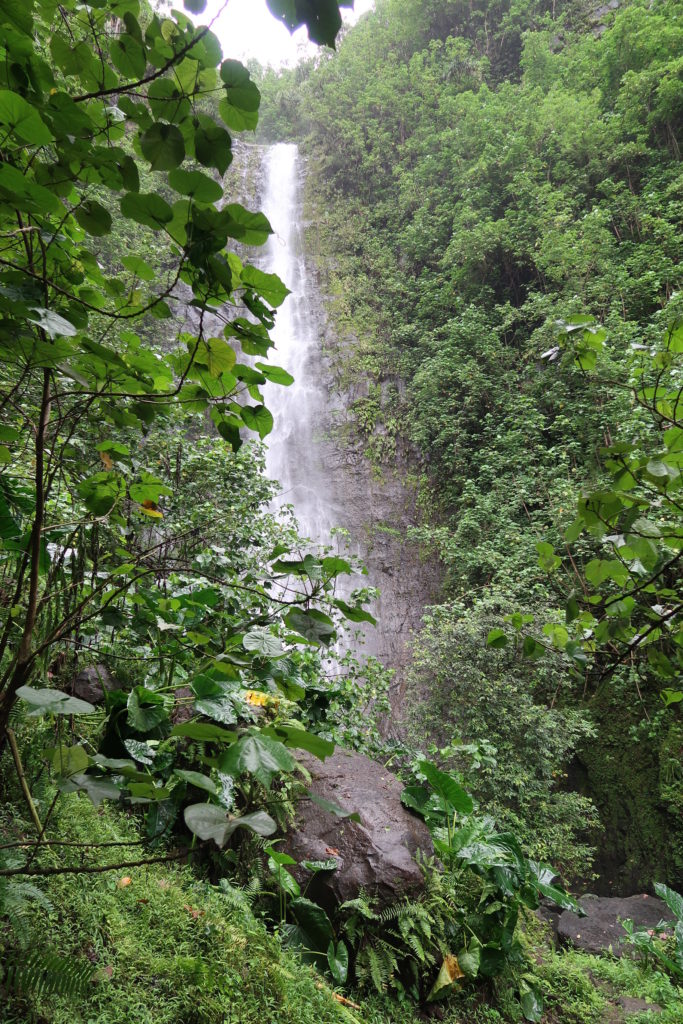
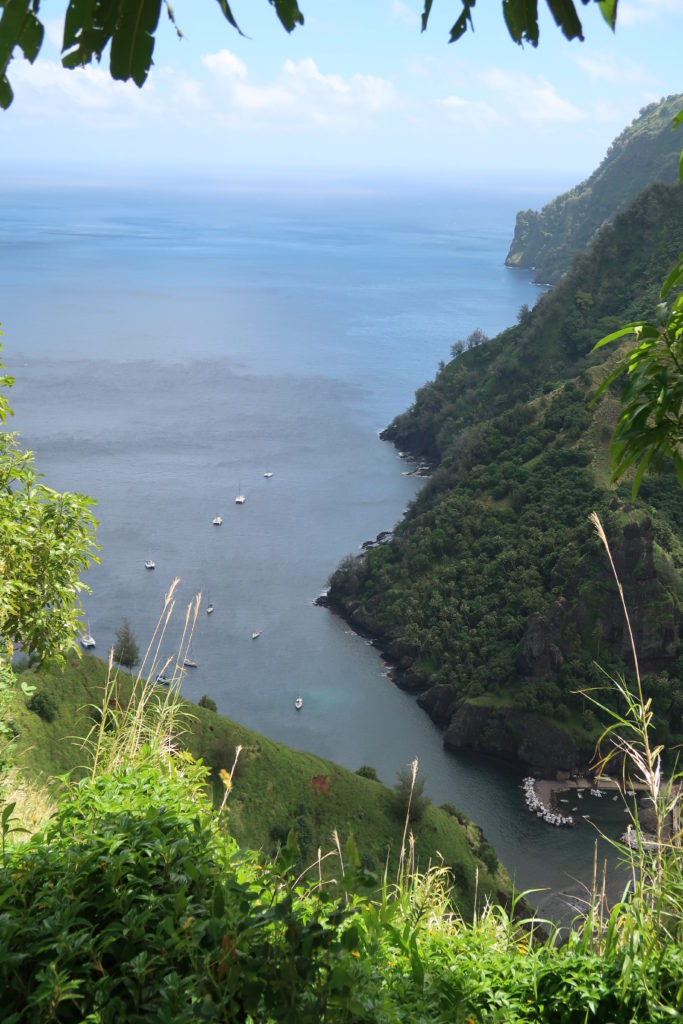
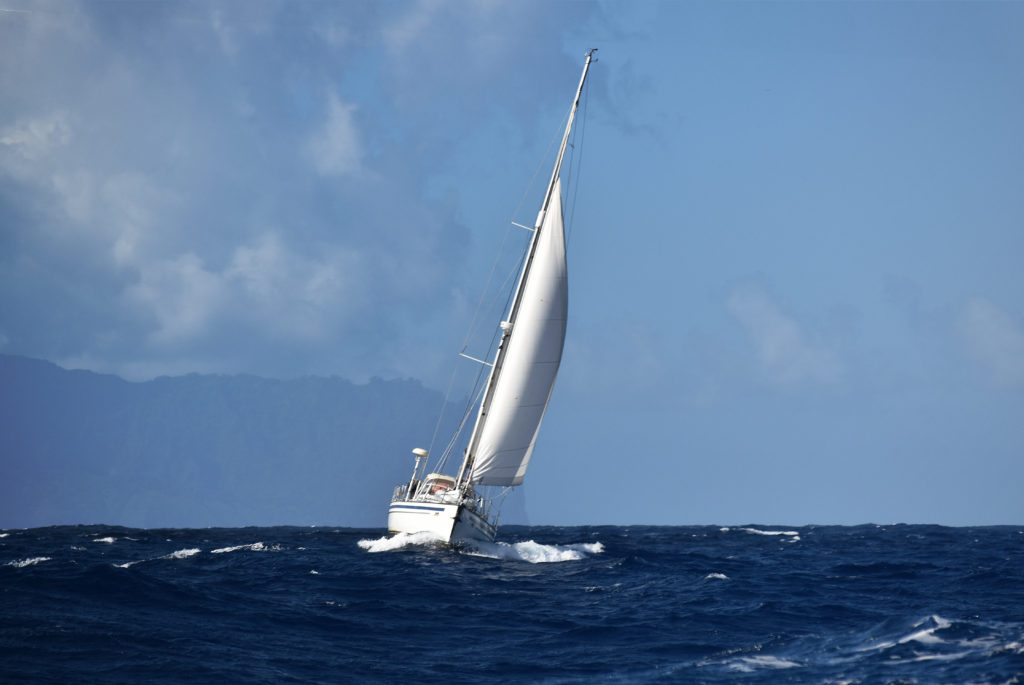
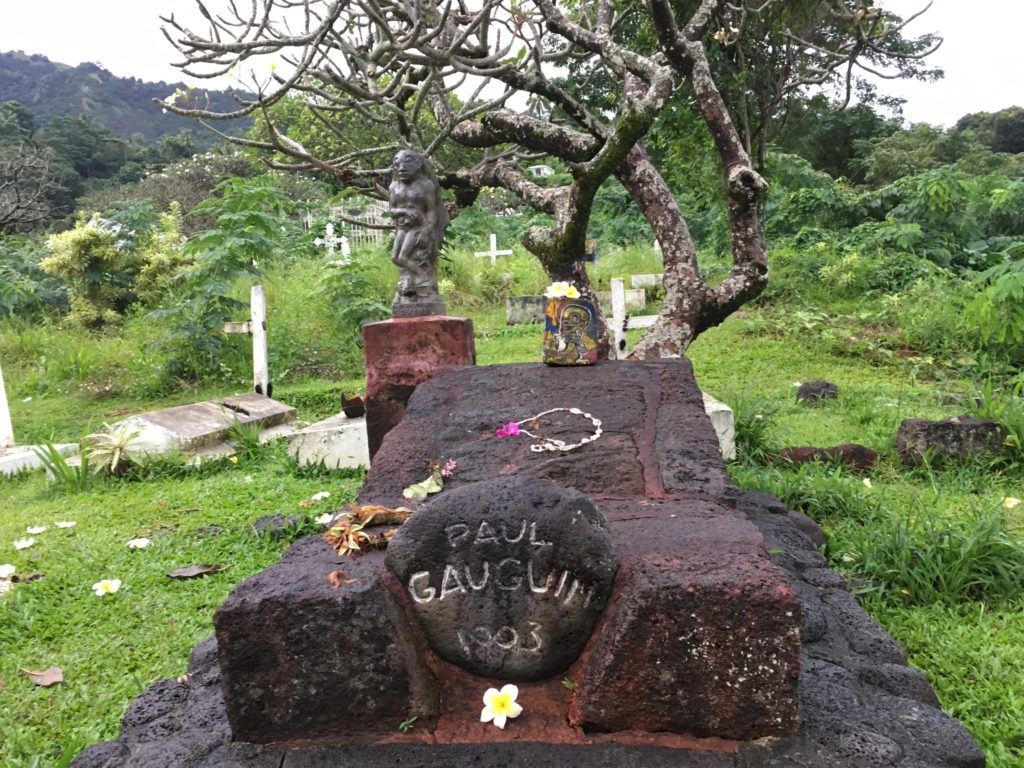



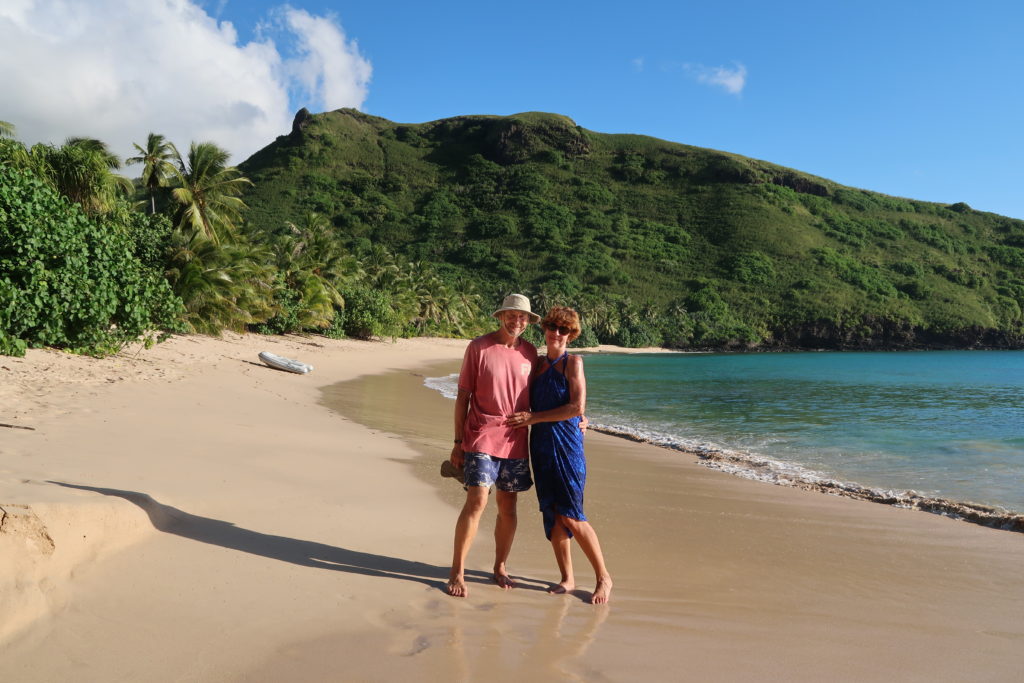
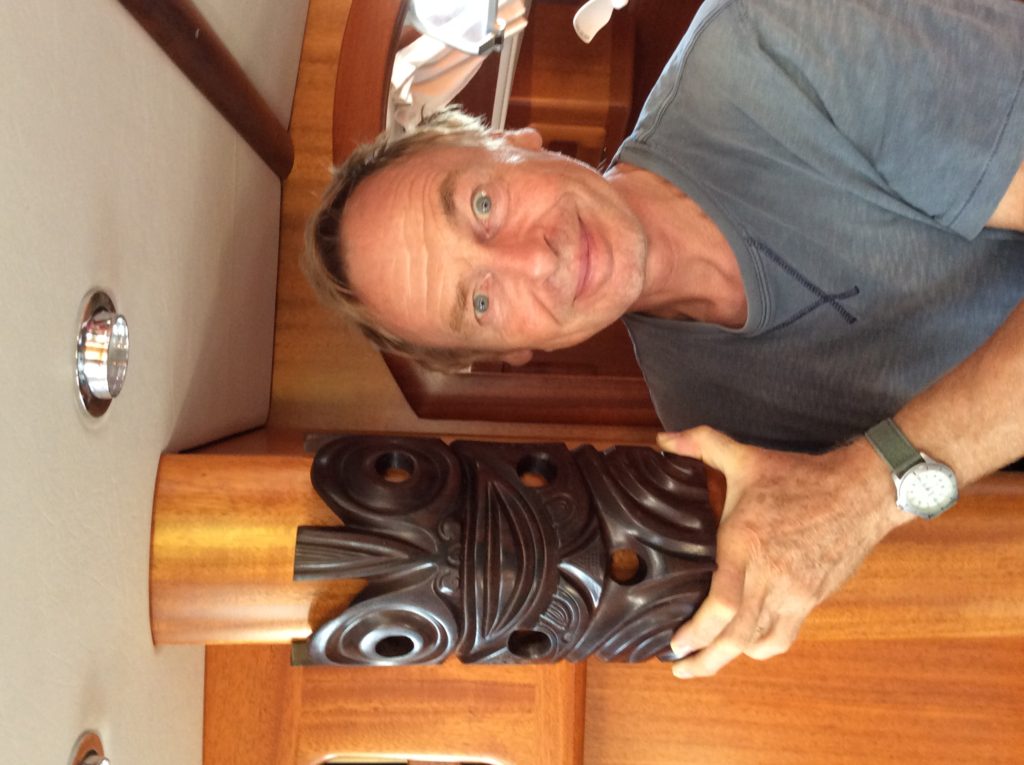
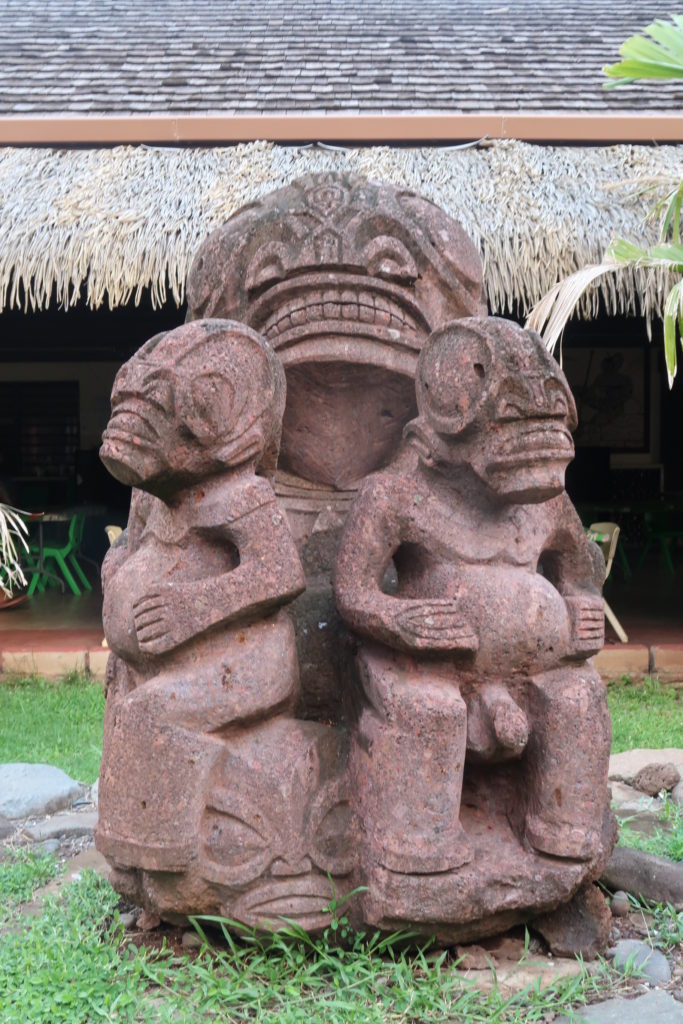
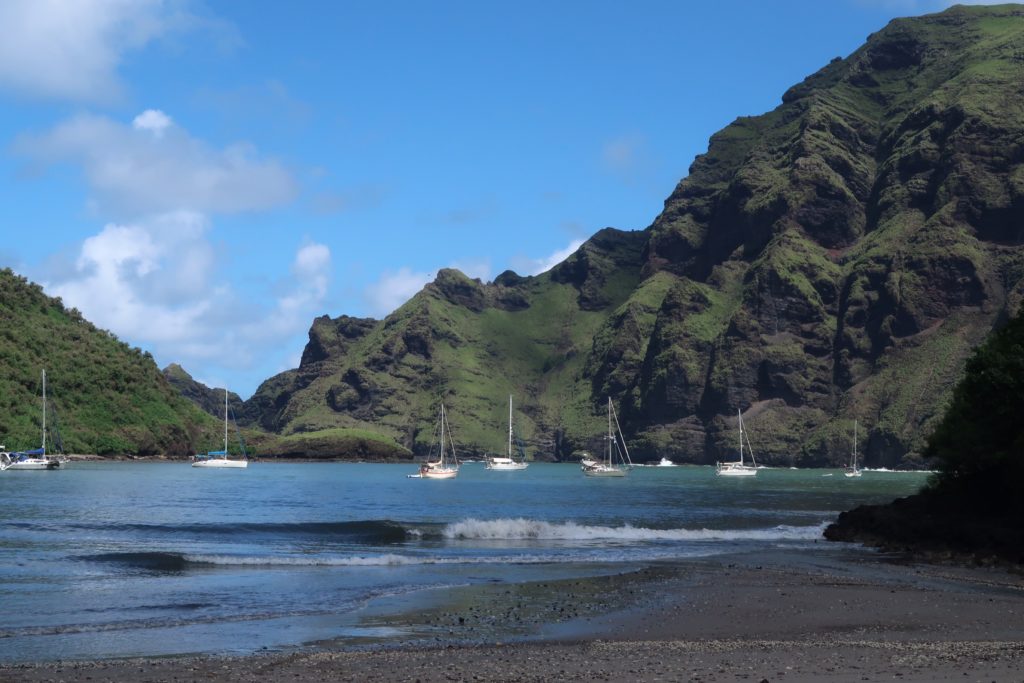
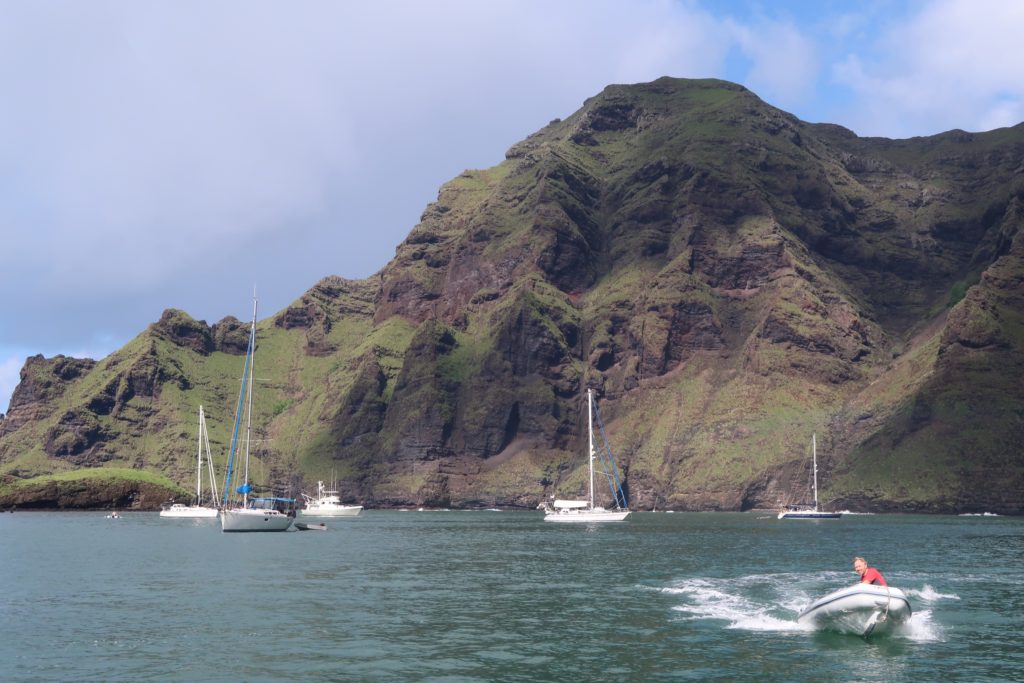
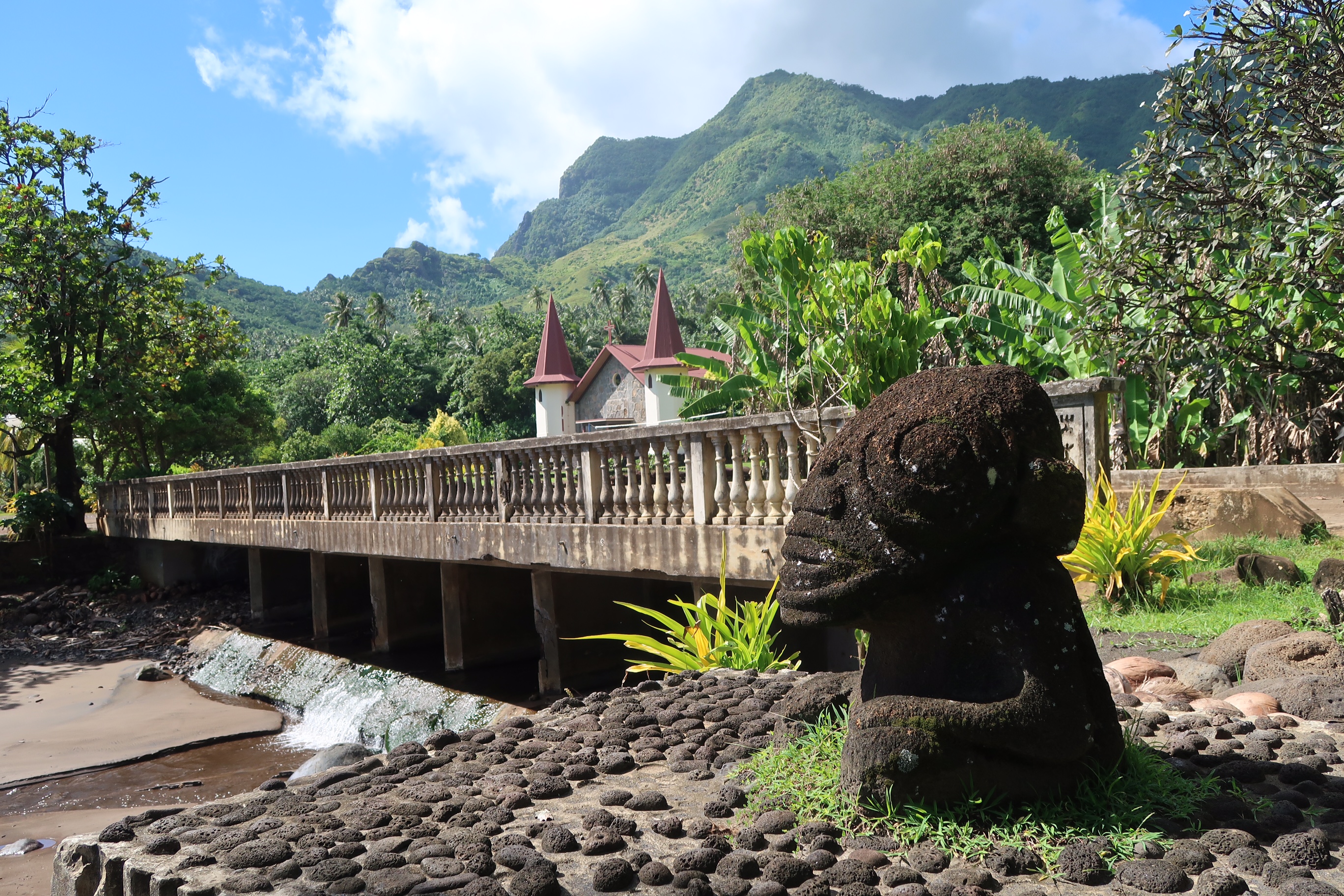
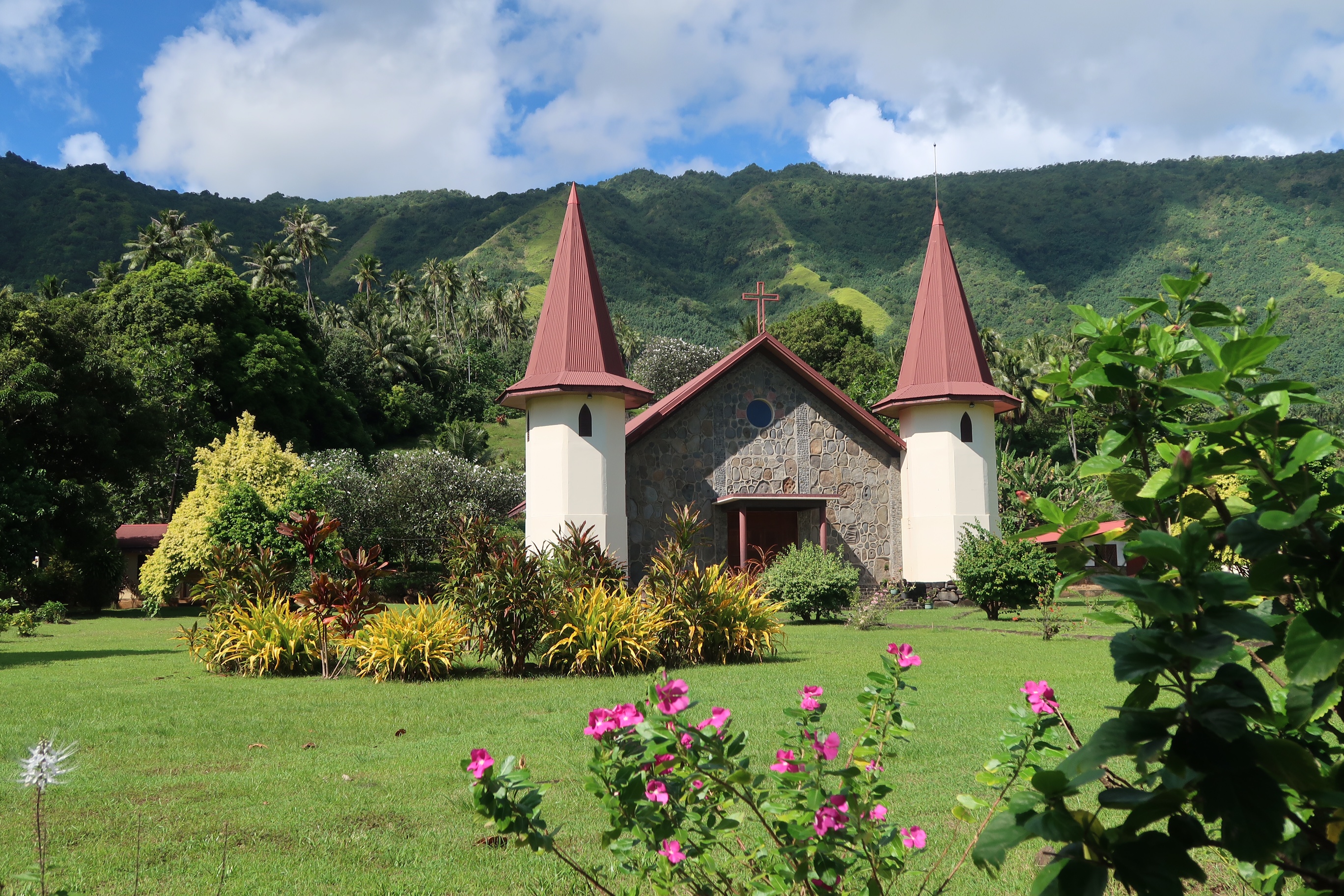
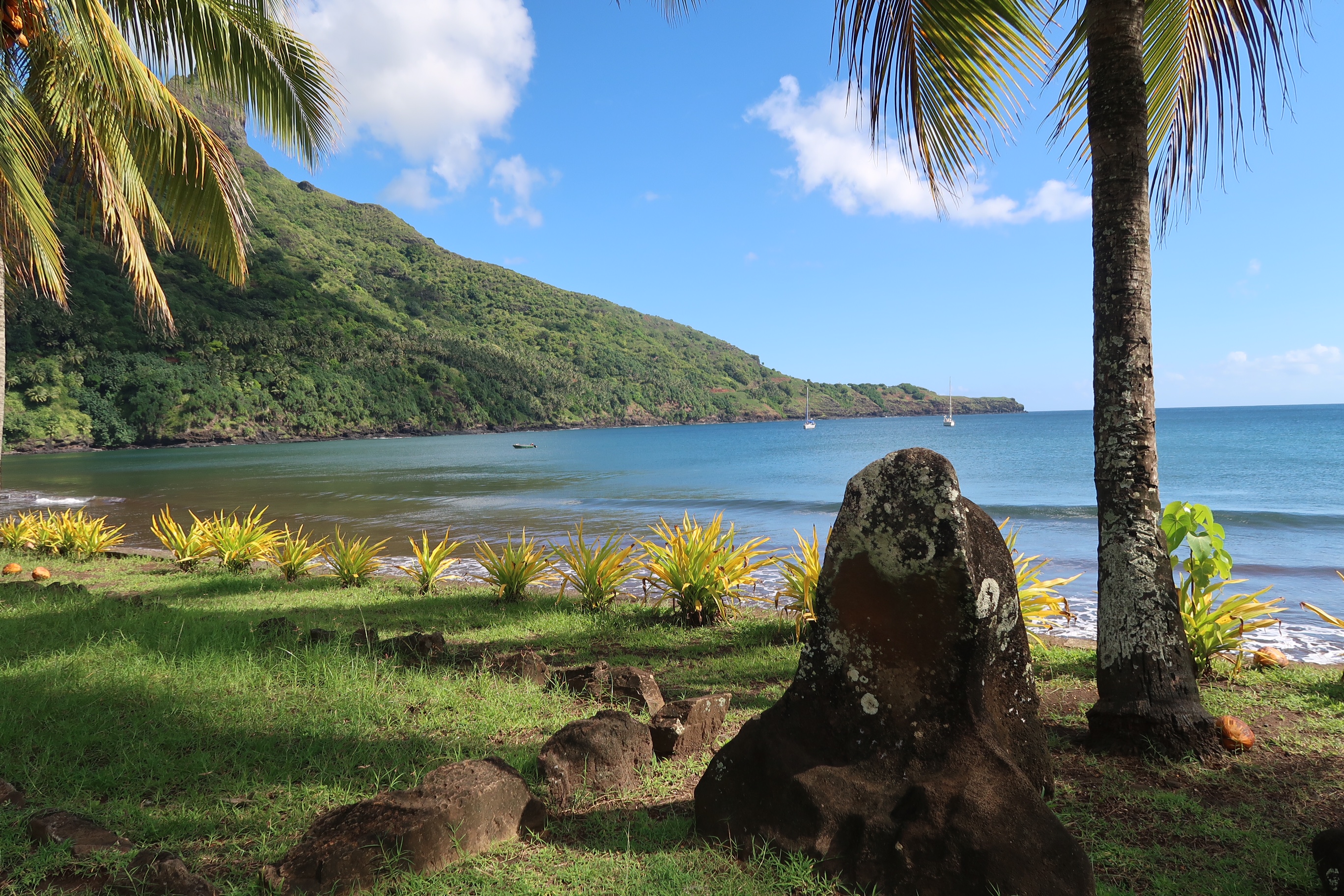
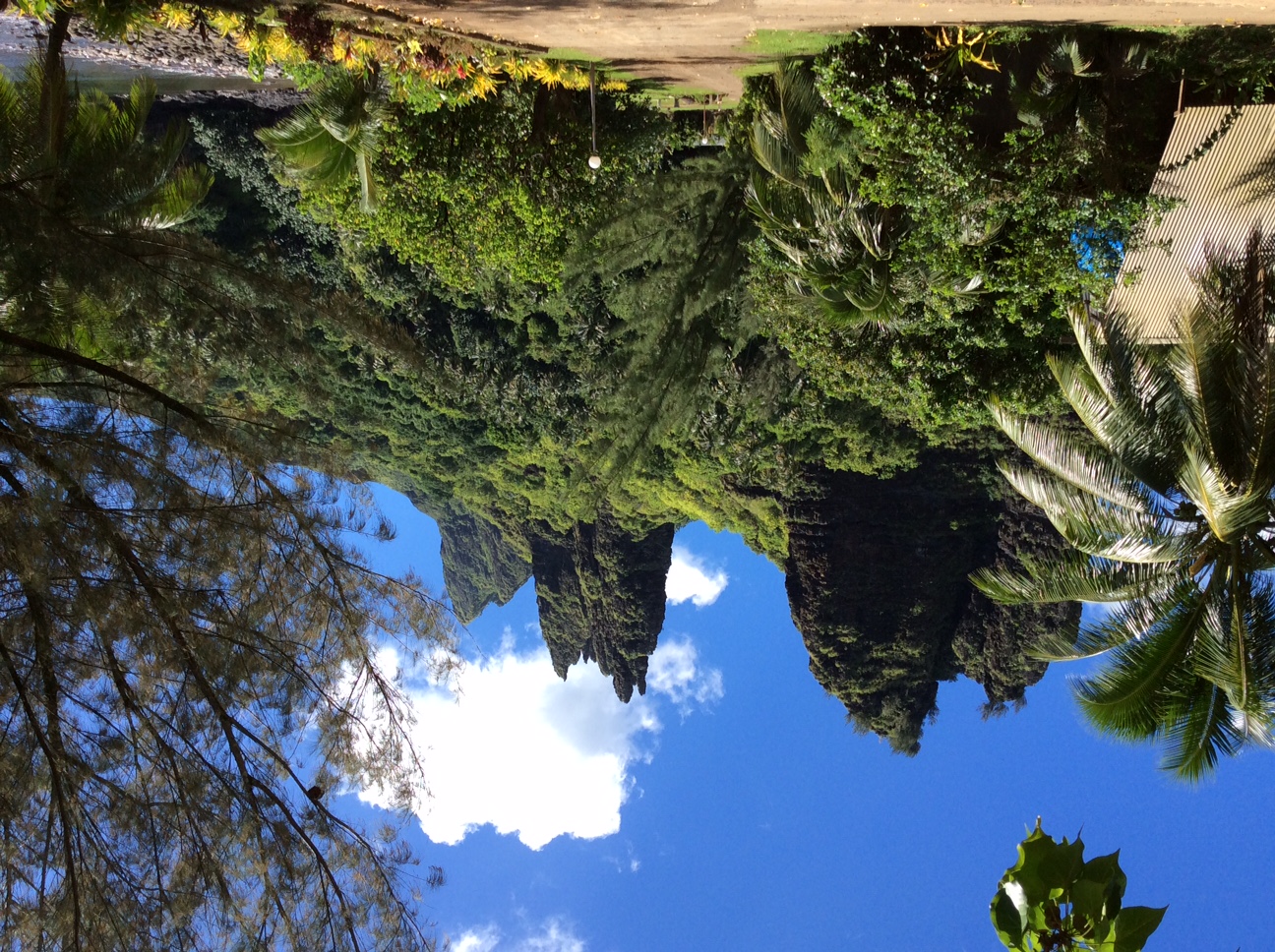

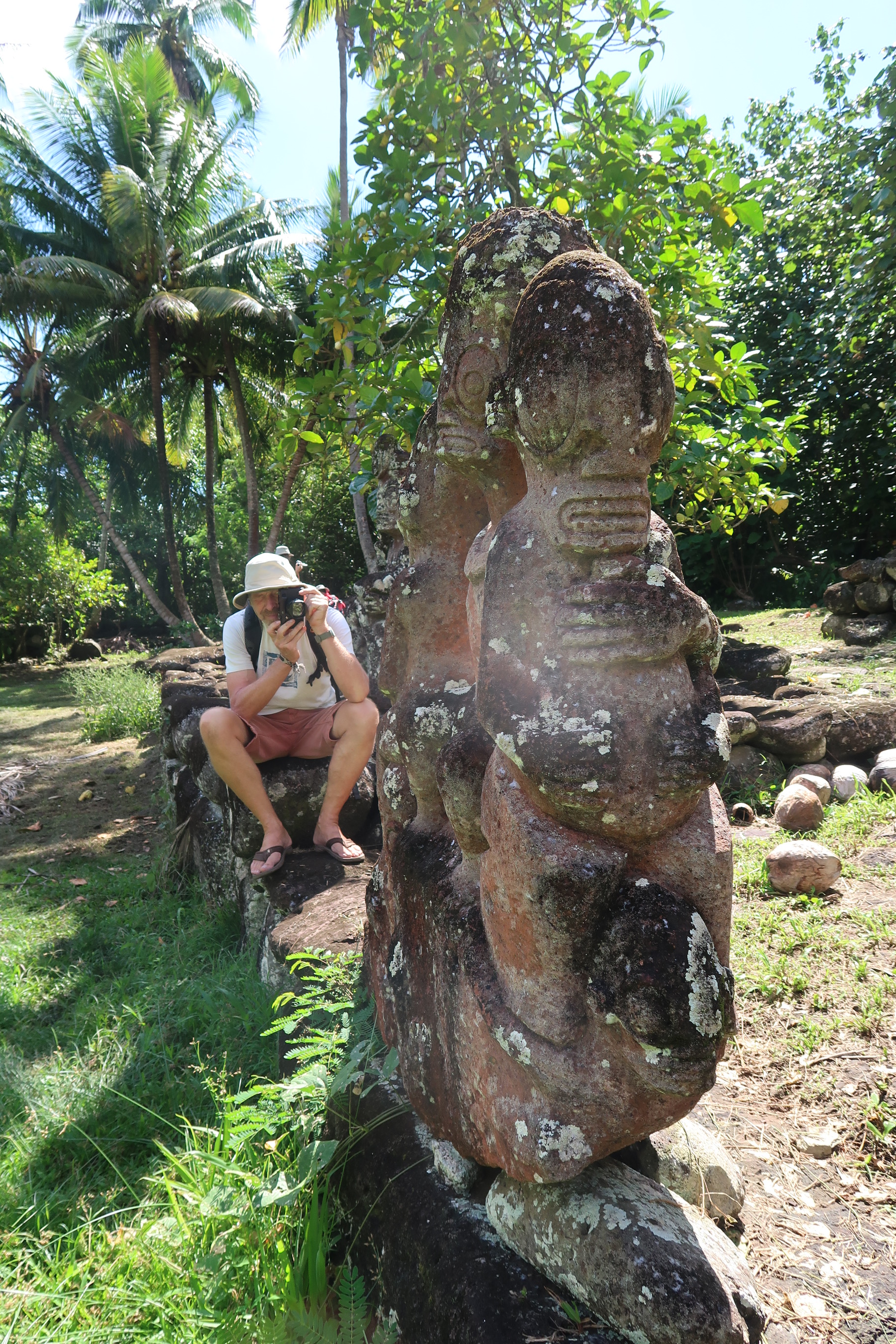

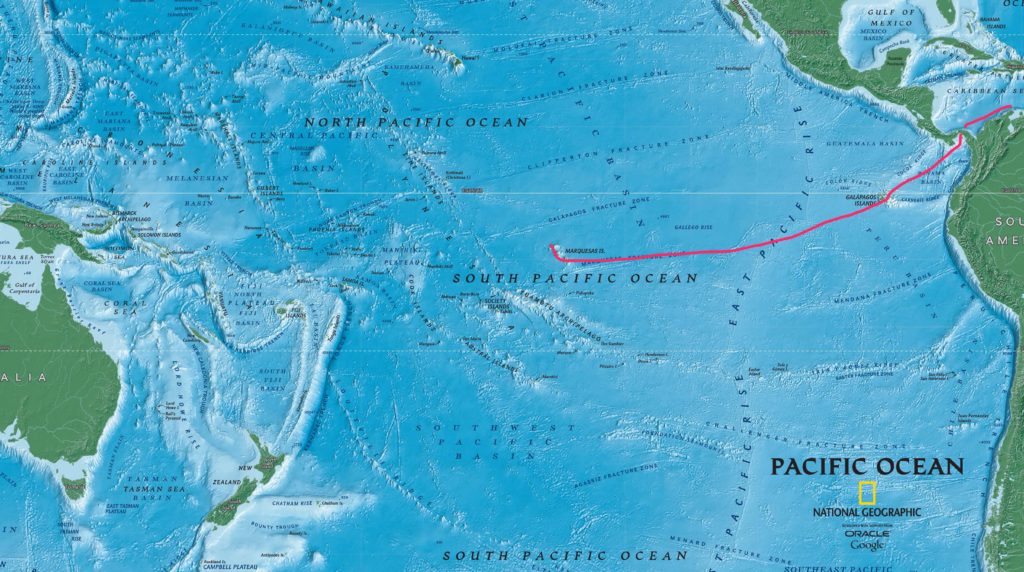
4 Comments
Hugh
July 7, 2017 - 7:32 pmWonderful – wish I could have been there! How did you get the route onto the maps?!
annie
July 9, 2017 - 10:38 pmEasy… I’ll show you sometime xx
fiona shires
July 31, 2017 - 8:50 amBeautiful photos and a wonderful blog – I await each one eagerly! Hope you had a good trip back.xx
annie
August 9, 2017 - 1:56 amHi Fiona
Yes it was great to be back, albeit for such a short time. Next home in November. Glad you’re liking the blog xxxx